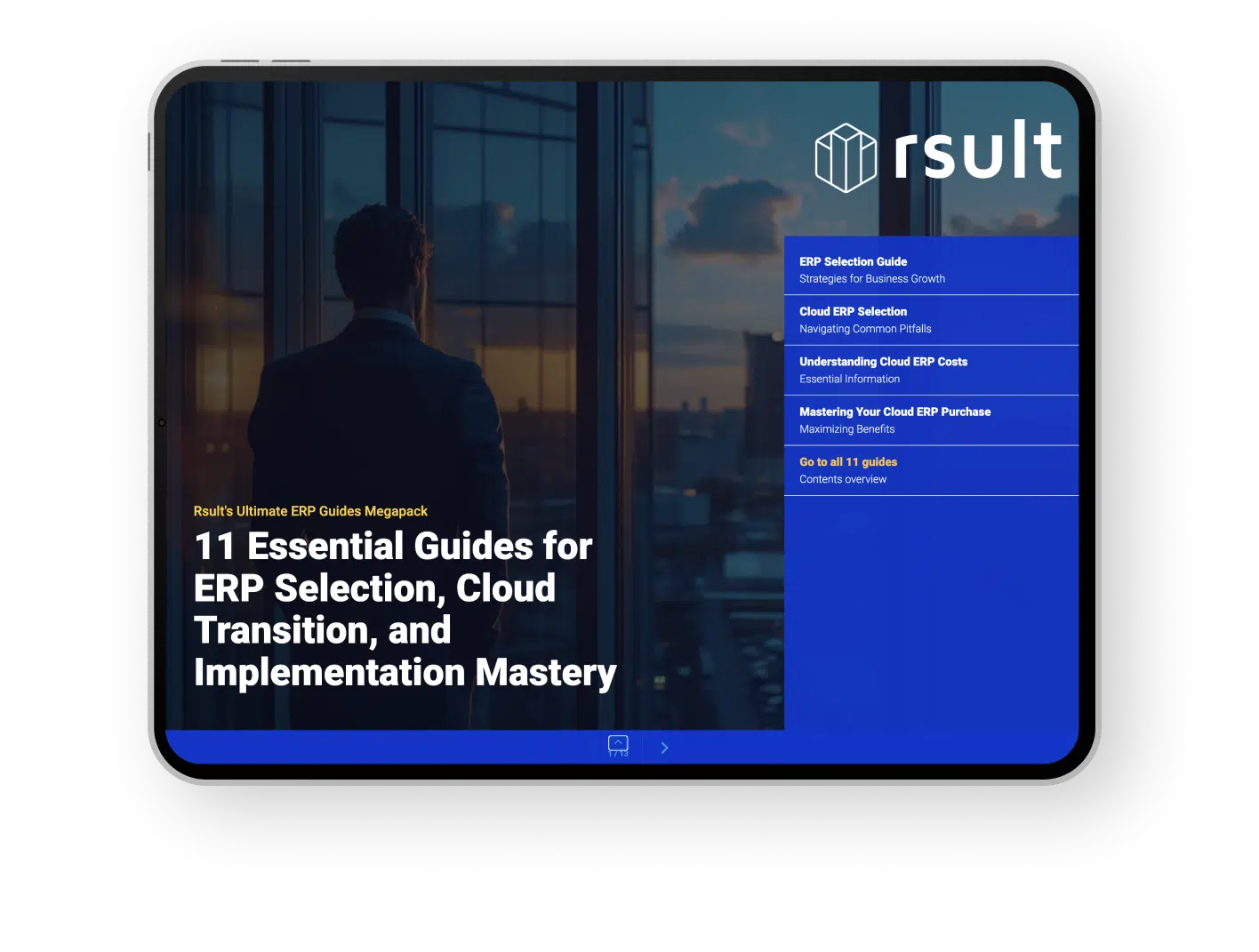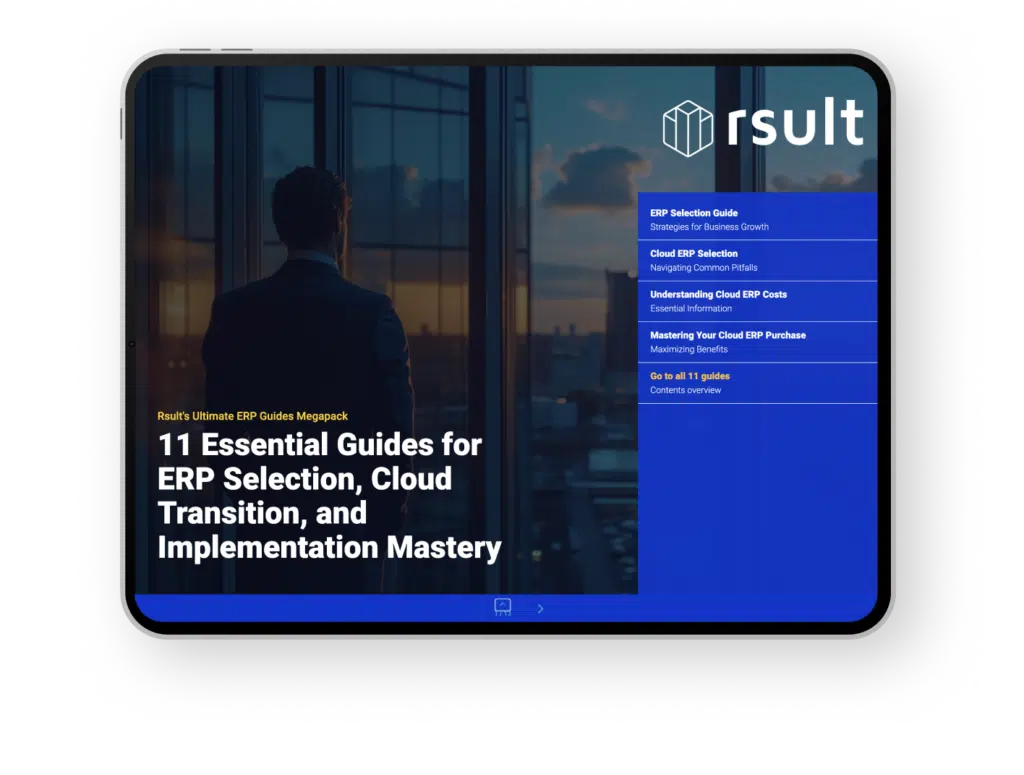As an integral part of the fashion industry’s fabric, you’re already familiar with the competitive and complex nature of garment manufacturing. To stay ahead, implementing an ERP for garment manufacturing is no longer just an option—it’s imperative. Unlike generic enterprise systems, garment manufacturing solutions are customized to meet the unique challenges of your field, streamlining processes from design to delivery. With enterprise resource planning for the fashion industry, you gain the agility to adapt quickly, the efficiency to scale sustainably, and the clarity to strategize with precision.
Embracing an ERP implementation for clothing manufacturing means betting on technology that can speak the language of apparel production. It provides you with real-time insights and control over your entire operation, ensuring that you can stay on top of every detail, from the drawing board to the final stitch.
Key Takeaways
- Discover tailored ERP solutions that grasp the specific needs of fashion, home goods, and footwear manufacturing.
- Streamline operations and sharpen your competitive edge in the garment industry.
- Capitalize on ERP features designed for automating intricate manufacturing processes.
- Enhance visibility and control across your supply chain and production lifecycle.
- Adapt and thrive in a rapidly evolving industry with tech-centric strategies.
- Improve demand forecasting and inventory management to match market rhythms.
The Essential Role of ERP in Modern Garment Manufacturing
As a professional in the garment industry, you’re no stranger to the capricious nature of fashion trends and the pressing need to keep up with volatile consumer demands. In this landscape, an ERP for garment manufacturing is not just advantageous; it’s essential for survival. These systems offer a specialized set of tools tailored for the unique challenges of the textile industry, making them a key investment for any forward-thinking business.
- Accurate Forecasting and Demand Planning: The days of guesswork are over. With textile industry ERP solutions, you can leverage advanced forecasting tools that digest historical sales data and market trends to predict future demands with remarkable accuracy. This foresight helps you evade the pitfalls of overstocking or facing stockouts, maintaining the perfect inventory balance.
- Seamless Departmental Integration: Imagine every cog in your garment manufacturing machinery moving in perfect unison. That’s the seamless integration offered by a garment manufacturing management system. From design to delivery, every department communicates and collaborates through a single digital platform, optimizing workflows and enhancing operational efficiency.
- Real-Time Inventory and Data Management: In the fast-paced world of apparel, knowing your stock levels and understanding market trends as they happen gives you a formidable edge. Your ERP manages inventory in real-time, giving you instant insights that enable quick, well-informed decisions and ensure sensitive data remains protected.
Ultimately, implementing a robust garment manufacturing ERP system empowers your business with a keen awareness of inventory requirements, trend predictions, and departmental cohesion, culminating in a formidable competitive edge. Embrace this necessity, not luxury, to watch your business thrive in the dynamic textile industry.
Key Features of ERP for Garment Manufacturing
Navigating through the intricacies of the fashion industry, you’ll find manufacturing ERP software to be a quintessential ally. It’s tailored to streamline operations, from demand forecasting to tying up the loose ends with vendor management. By understanding these key features, you are empowered to optimize your garment manufacturing process with precision and finesse.
Demand Forecasting and Planning
As fashion trends rapidly evolve, having robust demand forecasting and planning capabilities within your ERP system is crucial. Utilizing historical sales data, these tools allow you to anticipate market trends accurately, preparing you for the launch of new product lines without the risk of excess inventory or stockouts.
Materials Requirements Planning (MRP)
Managing your fabric and trim purchases effectively demands meticulous Materials Requirements Planning (MRP). MRP becomes your strategic tool for aligning material purchases with production schedules, ensuring that each garment is crafted with the ideal quantity and quality of resources.
Advanced Inventory Management
Keeping track of an expansive inventory characterized by varied sizes, styles, and colors is made simpler with advanced inventory management systems. These systems provide clarity and control, which are essential for maintaining an efficient flow of your manufacturing operations.
Comprehensive Warehouse Management
Efficacy in warehouse management is about handling the complexity of orders that could range from raw fabrics to partially assembled designs. Your ERP software should provide a coordinated approach to managing these varied elements, culminating in a refined and systematic order fulfillment process.
Robust Vendor Management Portals
The relationships with your vendors are simplified and streamlined through robust vendor management portals. These portals serve as a centralized communication hub, minimizing errors and enhancing the efficiency of your production operations.
| ERP Feature | Benefits | Impact on Garment Manufacturing |
|---|---|---|
| Demand Forecasting | Accurate prediction of market trends | Prevents overstocking and missed sales opportunities |
| MRP | Optimized fabric and trim purchasing | Reduces waste and aligns with production requirements |
| Inventory Management | Real-time tracking of diverse inventory | Enhances product availability and space utilization |
| Warehouse Management | Order fulfillment accuracy | Streamlines operations from storage to delivery |
| Vendor Management | Centralized vendor communication | Improves production efficiency and relationship management |
Integrating Your Garment Manufacturing Processes with ERP
Understanding how to integrate your garment manufacturing processes can seem complex, but it’s simplified with the right ERP for Garment Manufacturing. This powerful software harmonizes your operations, merging all the intricate facets of your apparel business. It’s about bringing together your design teams, your production lines, and your logistics – all under one system for a more efficient workflow.
Imagine having your sourcing, production planning, and distribution stages seamlessly communicating with each other. Garment production software designed for the apparel industry ERP does just that. It aligns every step from the initial spark of a design idea to the final product shipping to your customers. The result? A cycle that works in harmony to ensure a swift and successful market delivery. Here’s a close look at what that integration can achieve for you:
- Sourcing optimization: Find and manage your materials effectively, all through a unified system.
- Design and development coordination: Your creative teams can work closely with production units to fine-tune designs before they go into manufacturing.
- Production phase alignment: Consolidating all stages of production to increase efficiency and reduce the room for errors.
- Quality control streamlining: Implement consistent quality checks throughout the production cycle for better outcomes.
- Inventory management enhancement: Manage your products and materials with pinpoint accuracy using advanced tracking features.
- Logistics and distribution integration: Ensure your products are delivered on time by synchronizing your shipping with production.
Through this level of integration, your business can look forward to not just maintaining consistency and improving communication, but also scaling operations with confidence. This is how a coherent and efficient garment manufacturing cycle is established, empowering you to meet the dynamic demands of the fashion industry head-on.
| Process | Without ERP Integration | With ERP Integration |
|---|---|---|
| Sourcing | Manual coordination; potential mismanagement | Automated, efficient supplier management |
| Design to Production | Potential miscommunication; slow approval processes | Seamless transition; real-time collaboration |
| Quality Control | Inconsistent checks; isolated systems | Uniform standards; integrated checkpoints |
| Inventory Management | Inaccurate tracking; over/under-stocking | Precise tracking; optimal stock levels |
| Logistics | Disjointed scheduling; potential delays | Coordinated schedules; timely fulfillment |
With an apparel industry ERP, you’ll be at the forefront of technology, ready to adapt to changes swiftly and maintain a competitive edge. Your operations will be a testament to efficiency, and your clients will notice the difference in the quality and reliability of your services.
Streamlining Operations and Reducing Overhead
When implementing an ERP system within your clothing manufacturing operations, you can expect a significant boost in organizational efficiency and a reduction in unnecessary overhead costs. By integrating ERP software that’s tailored for the unique demands of the fashion industry, you enable your business to optimize your workflows and simplify complex processes. Let’s explore how ERP brings efficiency and cost-effectiveness to your operations.
Efficiency in Operations
An ERP system designed with your industry in mind does more than just manage day-to-day tasks—it transforms them. This software takes over repetitive, time-consuming functions, allowing your staff to focus on more strategic initiatives that drive business growth. By centralizing all operations, from design through production to sales, it eliminates informational siloes and accelerates data flow, thereby enhancing your overall business responsiveness.
Cost Control Measures
ERP software for efficiency is an instrumental ally in managing your company’s finances. It provides invaluable insights into all cost-related aspects of your business, facilitating the tracking and analysis of expenditures. With these analytics at your disposal, you can pinpoint areas where costs can be trimmed without compromising on quality or productivity, ensuring financial health and sustainability over the long term.
Supply Chain Optimization
A finely tuned supply chain is vital to meeting market demands and customer expectations. An ERP implementation for clothing manufacturing offers advanced supply chain management tools that help streamline your processes. By anticipating issues before they arise and ensuring that inventory levels are kept at optimal levels, your supply chain runs like a well-oiled machine, capable of adapting to market changes with agility and precision.
| Operational Area | Challenges | ERP Solutions | Expected Outcomes |
|---|---|---|---|
| Inventory Management | Overstocking and stockouts | Advanced forecasting and real-time tracking | Optimized inventory levels and reduced holding costs |
| Production Planning | Inefficient production schedules | Automated scheduling and resource allocation | Shorter lead times and increased throughput |
| Cost Accounting | Unclear cost structures | Detailed cost analysis and reporting | Greater cost transparency and improved budgeting |
| Sales and Customer Management | Disjointed customer data | Centralized customer database and CRM tools | Enhanced customer relationships and loyalty |
| Supply Chain Coordination | Supplier and logistics variances | Integrated supplier portals and transport planning | Streamlined supply chain with fewer disruptions |
Execute these changes through ERP, and take the helm as you drive your clothing manufacturing business towards a future marked by increased efficiency, cost control, and optimal supply chain operations.
Addressing the Apparel Industry’s Unique Challenges
As you navigate the complexities of the fashion world, your business requires innovative solutions to stay ahead. The implementation of an apparel industry ERP can be transformative, directly addressing the intricate issues of garment manufacturing. With ever-changing fashion trends and convoluted inventory setups, you need a system that’s as dynamic as the industry itself.
Consider the value proposition offered by garment manufacturing solutions integrated within ERP software. These systems allow for swift adjustments in inventory levels, adapt to consumer demands in real-time, and afford a granular level of insight that could redefine how you respond to market shifts. Your ability to remain competitive and current hinges on effective enterprise resource planning for the fashion industry.
- Automated inventory adjustments
- Real-time trend analysis
- Streamlined operational processes
Below is a detailed breakdown of how an ERP system can specifically target and alleviate the burdens your apparel business may face:
| Challenge | Solution | Impact |
|---|---|---|
| Complex Inventory Management | Real-time stock level monitoring and automated replenishment | Reduction in stock-outs and overstock, optimized inventory turnover |
| Adaptability to Trends | Agile planning tools with data analytics for forecasting | Enhanced market responsiveness, reduced time-to-market for new collections |
| Customer Preference Tracking | Customer relationship management (CRM) integrations | Improved customer satisfaction, personalized marketing and merchandising |
Mastering these challenges won’t just keep your operations afloat but will set your business on a course towards unparalleled growth and innovation. The right ERP system doesn’t just solve problems—it opens doors to new opportunities.
Enhancing Collaboration Across Departments
Collaboration is the key to success in complex industries like garment manufacturing. With constantly evolving fashion trends and the demand for speed-to-market, synchronizing your departments is essential. By adopting an ERP system tailored to the unique needs of the industry, you can streamline interaction between design and execution, ensuring that your organizational goals are met with precision.
Production Planning and CAD Coordination
Integrating ERP software into your production planning and using computer-aided design (CAD) systems can transform the way you approach garment manufacturing. Production planning is critical to managing your resources effectively, while CAD plays a fundamental role in bringing designs to life with accuracy and efficiency. With ERP for garment manufacturing, these tools work together to ensure that your designs are produced according to specifications, budgets are adhered to, and schedules are met.
Merchandising and Product Development Integration
The link between merchandising and product development is vital for aligning products with market trends. ERP integration facilitates seamless communication, allowing your merchandising team to provide valuable insights directly to the product development department. This connectivity ensures that customer preferences drive design and production, leading to more marketable collections that resonate with your target audience.
Centralized Accounting and Financial Management
Financial oversight is crucial in the fast-paced world of garment manufacturing. With ERP software, financial data is centralized, providing a clear view of your company’s financial health. This consolidation aids in budgeting, forecasting, and overall financial management, which is integral to making strategic decisions that impact profitability.
| Department | ERP Features | Benefits |
|---|---|---|
| Production Planning | Scheduling, Capacity Planning, Raw Materials Procurement | Enhanced resource utilization, Reduced downtime, Cost savings |
| CAD | Design Integration, Pattern Management, Material Optimization | Increased design precision, Reduced waste, Improved product quality |
| Merchandising | Trend Analysis, Inventory Management, Sales Forecasting | Alignment with consumer trends, Inventory control, Accurate demand predictions |
| Accounting | Financial Reporting, Budgeting, Expense Tracking | Real-time financial insights, Fiscal accuracy, Strategic financial planning |
ERP for Garment Manufacturing: A Technological Evolution
As you venture into the future of garment manufacturing, you’ll notice the integration of ERP software innovation, driving a remarkable shift toward apparel industry modernization. The key driver of this shift has been the technological evolution in garment manufacturing, primarily led by advanced ERP solutions. These sophisticated systems have redefined what’s possible, merging the latest tech with intricate industry demands. They unlock opportunities for manufacturers to streamline processes and decision-making with real-time data, shaping the very framework that enables businesses to flourish amidst ever-transforming market needs.
- Streamlined Processes: Imagine the complexity of coordinating various lines of clothing, each with its own size, color, and style variations. ERP systems seamlessly manage these facets, ensuring that your manufacturing process is as efficient as possible.
- Real-Time Data Access: Data is pivotal in the fast-paced world of fashion. With ERP solutions, you have access to the most up-to-date information, allowing you to make swift adjustments in response to market trends and consumer demands.
- Accurate Forecasting: Given the capricious nature of fashion, predicting future demands is key. ERP systems provide advanced forecasting tools to help you anticipate market fluctuations skillfully, averting stock shortages or overages.
This era of technological transformation doesn’t just add convenience; it is a drastic overhaul of traditional practices, giving you the robust support needed to compete effectively. Embrace the change, and you’ll find your garment manufacturing business poised to meet challenges head-on, with precision and agility.
| Traditional Practices | ERP-Enhanced Operations |
|---|---|
| Manual data entry and record-keeping | Automated, error-reduced data handling |
| Isolated department functions | Integrated, cross-functional workflows |
| Delayed response to market changes | Agile adaptation to new trends |
| Inexact inventory and demand forecasting | Precise forecasting with historical data analysis |
As you adapt to this evolutionary phase, remember that the heart of ERP’s benefits lies in its specificity to your industry. Leverage this targeted innovation to not only keep pace but to set the pace in the ever-evolving tapestry of garment manufacturing.
Boosting Efficiency with Cloud-based ERP Solutions
In today’s fast-paced garment manufacturing environment, the implementation of cloud-based ERP solutions is transforming operations. Providing an unparalleled mix of flexibility and security, they enable you to maintain a competitive edge with capabilities like mobile ERP management and real-time analytics. Let’s explore how these technological innovations can enhance your manufacturing processes and decision-making capabilities.
Access Anywhere, Anytime
Imagine being able to oversee and adjust your manufacturing operations from any location at any time. Whether you are visiting a supplier, at a trade show, or in a design meeting, cloud-based ERP solutions ensure that updated business data is always at your fingertips. This accessibility empowers you to make timely decisions, keeping your business agile and responsive to any market changes.
Data Security and Real-time Analytics
With the sensitivity of data in the garment industry, security is paramount, and cloud-based systems offer robust protection against data breaches while providing the added benefit of real-time analytics. This powerful combination means that not only is your information secure, but it’s also actively working for you, delivering insights that lead to improved efficiency and proactive adjustments in garment manufacturing.
Mobile Solutions for On-The-Go Management
Mobile ERP management tools have become a game-changer, enabling management and teams to remain connected with the operational heart of the business from any device. This mobility integrates seamlessly with cloud-based solutions, ensuring that you have control over the rapid dynamics of garment production, even when you are not physically on-site.
| Feature | Benefits | Impact on Garment Manufacturing |
|---|---|---|
| Cloud Accessibility | Operational oversight from anywhere at any time, rapid response to market changes | Increased agility and resilience in operations, enhanced competitiveness |
| Data Security | Robust encryption and secure data storage | Protection of sensitive design and operational data, peace of mind for stakeholders |
| Real-time Analytics | Instant insights for faster decision-making | Immediate adjustments to production processes, inventory management, and supply chain coordination |
| Mobile Management | Dashboard views and management capabilities on-the-go | Continuous control and monitoring, quicker reaction to operational demands |
Real-Time Data and Enhanced Decision Making
In the world of garment manufacturing, the speed at which you can collect and process information directly correlates with your ability to stay ahead of the curve. Implementing an ERP system that provides real-time data is no longer a preference—it’s imperative. This is your command center for making quick, confident decisions that align with fast-moving market trends and consumer demands. Imagine being able to see production metrics, sales forecasts, and inventory levels all updating instantaneously. This level of insight is what sets industry leaders apart, facilitating enhanced decision making in garment manufacturing.
Let’s consider the direct impact of real-time ERP data on different aspects of your operations:
- Production Scheduling – Adjust production plans on-the-fly to match real-time demand and avoid excessive inventory.
- Supply Chain Management – Respond proactively to any supply chain disruptions with alternate strategies refined with real-time insights.
- Customer Service – Provide accurate, up-to-the-minute information to clients about their order status and delivery timelines.
But how does real-time data ERP translate into tactile benefits for your garment manufacturing business? It comes down to agility and precision—two traits that can make a significant difference in a volatile market. To illustrate, here’s a table that encapsulates the key advantages:
| Advantages of Real-Time ERP Data | Outcome in Garment Manufacturing |
|---|---|
| Greater operational visibility | More informed and swift resource allocation |
| Immediate insight into performance metrics | Enabled rapid response to production issues |
| Dynamic demand forecasting | Minimized overstock and stock-outs |
| Enhanced inventory tracking | Reduced inventory carrying costs |
| Faster response to market changes | Increase in market share and competitiveness |
Embracing a real-time data-centric approach means that your finger is always on the pulse of your business’s heartbeat. As you continue to cultivate a culture of agility within your operations, your garment manufacturing enterprise won’t just survive; it will thrive in an ecosystem that demands constant evolution. So, lean into the power of an ERP designed for the uniqueness of your industry—it’ll transform the way you make decisions, often in real time.
Maximizing Profitability and Market Responsiveness
Striving for profitability in garment manufacturing goes hand in hand with the necessity to stay in tune with market shifts and consumer demands. To ensure your apparel business thrives, implementing agile solutions that cater to the fast-paced nature of fashion is essential. This is where Enterprise Resource Planning (ERP) systems come into play, providing the flexibility and real-time data analysis needed for market responsiveness.
Agility in Fashion Industry Trends
Your ability to swiftly adapt to changing fashion trends can define your success in the competitive apparel landscape. ERP systems give you this adaptability by surfacing insights into current market demands and seasonal preferences. By closely monitoring these changing trends, your business can proactively adjust production, avoid excess inventory, and manage a supply chain that is as responsive as the fashion industry itself.
Improved Customer Satisfaction
At the core of customer satisfaction in the apparel industry is the delivery of the right products at the right time. ERP systems enhance your perception and processes regarding customer preferences, ensuring your manufacturing cycle aligns with purchasing trends. The result is not just customer delight but also repeat business and positive word-of-mouth that are invaluable in today’s social media-driven market.
Sustainable Practices and Cost Savings
Fostering sustainable ERP practices is not only an ethical choice but also a strategic one that can lead to considerable cost savings. By reducing waste, enhancing resource management, and streamlining production processes, ERP systems help you operate more efficiently. This translates to a leaner cost structure and an improved bottom line, all while contributing positively to the environment.
| Aspect | Impact on Profitability | Contribution to Sustainability |
|---|---|---|
| Inventory Management | Decreases stock-holding costs | Reduces material waste |
| Production Planning | Optimizes labor and machine use | Lowers energy consumption |
| Demand Forecasting | Aligns production with sales potential | Minimizes overproduction |
| Supply Chain Transparency | Fosters informed sourcing decisions | Encourages ethical supplier practices |
| Real-time Data Analytics | Enables proactive market strategies | Supports continuous process improvement |
Ultimately, your engagement with sustainable ERP practices and the pursuit of heightened market responsiveness are pivotal in achieving and maintaining heightened profitability in garment manufacturing while simultaneously amplifying customer satisfaction in the apparel industry.
Conclusion
As the future of garment manufacturing unfurls, your alignment with the right technology becomes crucial for scaling the heights of industry success. Implementing Enterprise Resource Planning (ERP) is not just about upgrading your systems, but it’s a solid investment in sustainable growth and operational finesse. With an ERP, you’re equipping your business with robust tools that provide agility and precision to conquer market demands, today and tomorrow.
In the realm of the fashion industry, where the only constant is change, a technology partnership is key to staying ahead of the curve. Leveraging an ERP allows you to track and pivot with the dynamic tides of fashion, enabling you to outpace competition and captivate your market. As you deepen your technological integration, remember that it’s not just about surviving the present; it’s about thriving in the future. An ERP is your gateway to innovation, providing a clear pathway for enduring success and improved profitability.
Your venture into ERP adoption marks a momentous step toward aligning with the technology partnership in the fashion industry that champions growth and efficiency. With your sights set on long-term achievements, your business is better prepared to weave through the evolving challenges of apparel manufacturing. Think of your ERP as the strategic partner that allows your operations to flourish seamlessly, crafting a legacy of excellence in quality, speed, and adaptability in the fast-paced world of fashion.
FAQ
How do ERP systems benefit garment manufacturing?
ERP systems offer a tailored solution that manages and integrates all facets of garment manufacturing, from design and development to production and supply chain management. They streamline operations, provide real-time data for better decision-making, and improve efficiency and agility, which are essential for staying competitive in the dynamic fashion industry.
What are the key features of an ERP system for garment manufacturing?
Key features include demand forecasting and planning to anticipate market trends, materials requirements planning (MRP) for precise purchasing and use of raw materials, advanced inventory management for handling diverse product variations, comprehensive warehouse management for efficient order fulfillment, and robust vendor management portals for easier collaboration with suppliers.
How does an ERP improve efficiency and operation streamlining?
An ERP system automates many time-consuming tasks, allowing for better resource allocation and reduced overhead costs. By enabling accurate forecasting, efficient inventory management, and optimized supply chain operations, it also aids in reducing waste and enhancing productivity.
Can an ERP system address the unique challenges of the apparel industry?
Yes, an ERP system designed for the apparel industry can manage the complex inventory structures and rapidly changing fashion trends. It provides tools for dynamic stock adjustments and offers data analytics for deeper insights into market behaviors, helping you to keep pace with customer preferences and industry shifts.
In what ways does an ERP facilitate collaboration across different departments?
An ERP integrates various departments such as production planning, design, merchandising, and financial management into a unified system. This integration ensures that each department’s activities are aligned with the company’s goals, promoting better communication, teamwork, and productivity.
What technological advancements do modern ERP systems bring to garment manufacturing?
Modern ERP systems incorporate features that cater specifically to the apparel industry, such as enhanced data analytics, cloud-based solutions, mobile access, and real-time reporting. These advancements help businesses adapt quickly to market changes and enhance their competitive edge.
Why are cloud-based ERP solutions crucial for garment manufacturers?
Cloud-based ERP solutions offer flexibility, scalability, and security that are crucial for garment manufacturers. They provide access to business-critical data anytime and anywhere, ensure strong data protection measures, and allow for mobile management of operations, which is vital in the fast-paced apparel industry.
How does real-time data benefit garment manufacturing?
Real-time data allows for immediate analysis and action, which is particularly important in an industry where trends and customer demands can shift quickly. It supports a proactive business model and enables fast, informed decision-making to keep pace with market dynamics.
How does an ERP system promote sustainability and cost savings in the fashion industry?
ERP systems assist fashion brands in becoming more sustainable by optimizing resource management, reducing waste, and providing tools for better inventory control. These systems help in delivering products timely and efficiently, reducing unnecessary expenses and supporting a more cost-effective and environmentally friendly operation.
How can an ERP system enhance customer satisfaction in garment manufacturing?
By providing detailed insights into customer preferences and trends, an ERP helps manufacturers design and deliver products that better meet customer expectations. Improved product availability and faster delivery times facilitated by an ERP system enhance overall customer experience and satisfaction.






